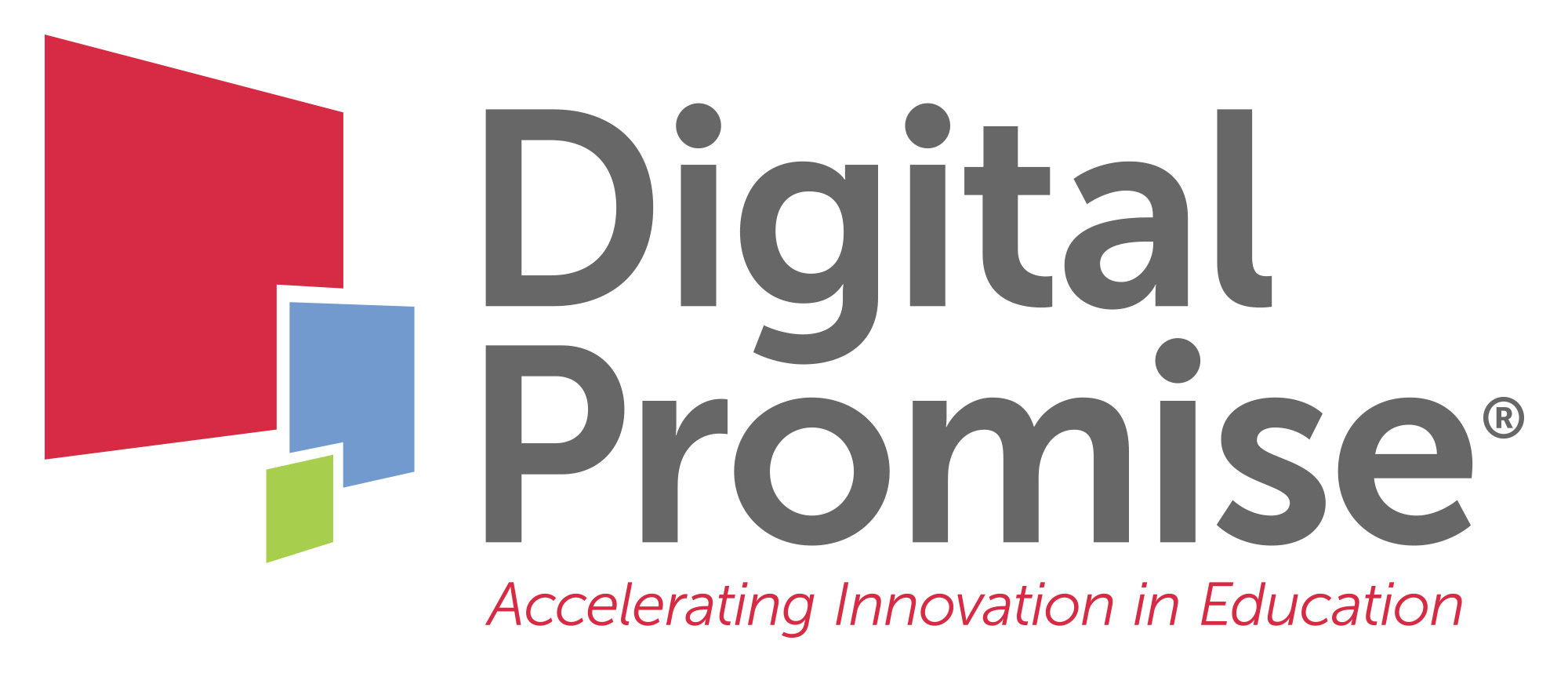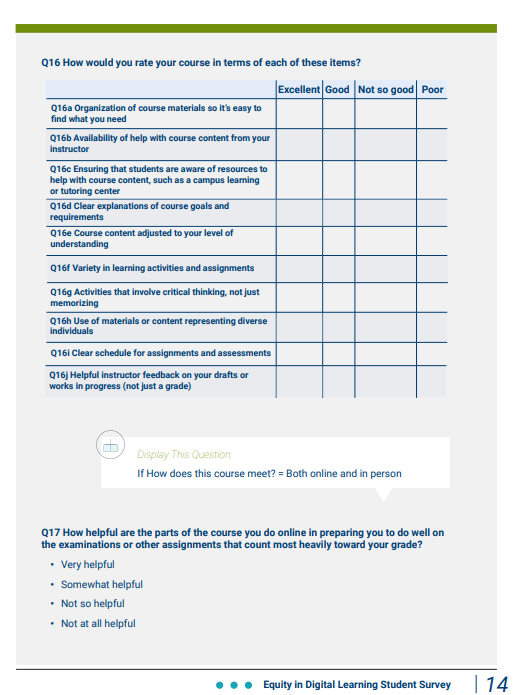A new survey instrument developed by Digital Promise in partnership with Every Learner Everywhere gives colleges and universities a way to use student response to inform course and program improvement for equity in digital learning.
The Equity in Digital Learning Student Survey is a tool faculty and institutional research offices can use to assess equity practices in digital learning methods. By utilizing student feedback, educators are provided with valid evidence to inform course and instructional improvement toward more equitable practices.
“Unless we intentionally build digital learning tools into courses with equity in mind, those tools aren’t effective,” says Patricia O’Sullivan, Content Manager at Every Learner Everywhere. “Used uncritically, the tools aren’t always reaching the populations we want.”
With the Every Learner value of “nothing about us without us” as a guideline, says O’Sullivan, the instrument design prioritizes the student experience. Improving outcomes for Black, Indigenous, Latino, poverty-affected, and first-generation students requires student engagement.
“They’re experts in their own experience, and they’re going to have insights into how equitable digital learning experiences are,” she says.
Assessing course quality
Designing this new instrument builds on other efforts to gather student perspectives on the experience of online learning throughout the COVID-19 pandemic.
“A lot of people found during Covid that students were falling behind or dropping out,” says O’Sullivan, “so there was a lot of reaching out to students to hear why it’s difficult.”
For example, in July 2020, the occasional Time For Class survey series conducted by Tyton Partners (in consultation with Digital Promise) focused on student satisfaction with the rapid transition to online learning. Similarly, the report Student Leaders Speak 2021: Student Voices Informing Educational Strategies captures the perspectives of students on equity and digital learning through a survey and original interviews.
The Equity in Digital Learning Student Survey enables individual departments and institutions to gather the perspectives of their students as part of their program assessment and continuous improvement. The appendix includes results from a nationally representative sample of the survey conducted in April 2021 for the purposes of benchmarking.
Building the instrument
The Equity in Digital Learning Student Survey was designed to be adapted for assessing different courses and institutions, and Digital Promise collaborated with two student fellows on survey design to make it more accessible. The survey was revised to maximize engagement based on student and faculty feedback garnered from early testing.
One use for the survey is as a starting point for assessment, says O’Sullivan: “If faculty, departments, or program committees aren’t really sure how to get feedback from students on the intersection of equity and digital learning, this gives them a place to start.”
The instrument notes the literature supporting the survey design as well as suggestions for administering it. It also includes suggestions for revising the wording of questions for different contexts.
Some of the elements covered in the survey include:
- Modality of the course
- Teaching practices that are incorporated into the course
- The learning conditions students work in
- Students’ ability to balance the course with other responsibilities
- Instructors’ ability to connect with students
The demographics section of the survey instrument will also enable disaggregating data by race, ethnicity, traditional or non-traditional status, income, and gender identity. This information can inform planning and revision efforts by instructional designers, faculty, and institutional research offices to make courses more equitable for minoritized and poverty-affected students.
The survey questions encourage students to think metacognitively about learning “It’s good for the faculty to hear that from the students,” O’Sullivan explains, “but it’s also good for the students to be reflecting on what they need from this course to be a better learner.”
The data gathered gives educators and faculty a starting point for course improvements. Whether it’s implementing practices that improve student engagement or expanding the use of evidence-based teaching practices, educators learn how each unique course can be adapted to enhance equity in digital learning.
Download the Equity in Digital Learning Student Survey



